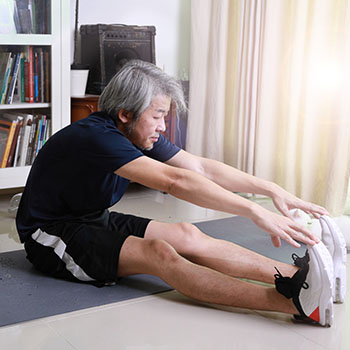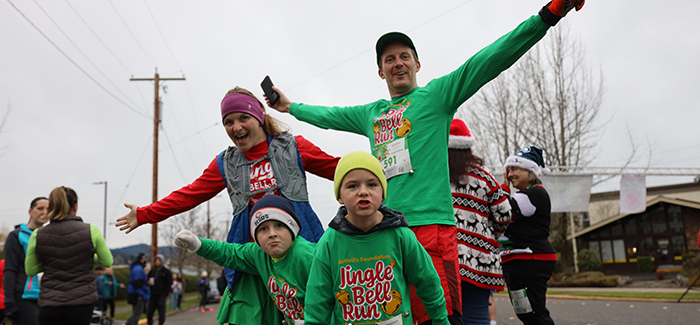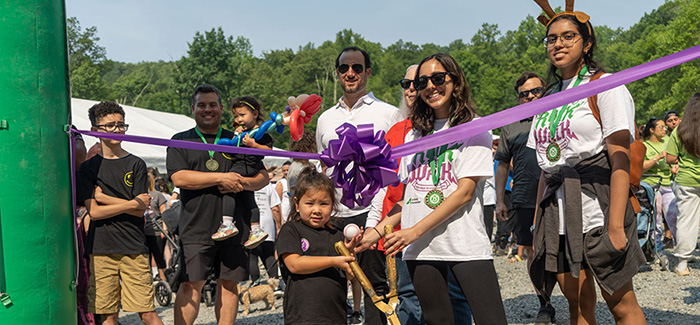Make Running With Arthritis Safe With Tips and Modifications
Although running is a high-impact activity, a regular running routine can benefit your joints if done safely. Use these tips to make it happen.
Running is a great aerobic exercise. It improves your heart and lung health, helps control weight, strengthens muscles and builds denser bones. Because running is a high-impact sport, some doctors do not recommend it for those who have arthritis in the weight-bearing joints. However, it also can benefit your joints: A regular running routine compresses and releases the cartilage in your knees, helping circulate synovial fluid that brings oxygen and nourishes your joints, and removes inflammatory waste products.
Many people with arthritis tolerate moderate running. And with these joint-specific tips and modifications you may, too. First and foremost, listen to your body. Make adjustments or modifications to your running schedule, your running form, your warm-up and stretching routine, or the running surface as needed to prevent injury. And talk to your doctor and physical and occupational therapists about other tips and modifications that may help with your specific joints affected by arthritis.
Joint-Friendly Running Tips and Modifications
User proper form. Proper running form is important to put less stress on both your upper and lower joints and to decrease the risk of injury. Hold your head high with gaze 30 to 40 feet ahead; relax your jaw, neck, shoulders (don’t shrug your shoulders up as it can increase tension as you run); keep hands relaxed and wrists loose; hold your elbows at your sides, bent about 90 degrees and swing arms forward and backward (don’t cross midline); align your foot with your knee when your foot hits the ground, and don’t raise your knees too high. Most experts recommend landing on your mid-foot, but some people prefer landing on forefoot or heel. Your trunk should be erect (don’t lean forward at the hip or waist); a slight forward lean will come from your ankle joint. You should run using a short, quick stride at a comfortable, easy pace. Run lightly; avoid pounding.
Wear the right shoes. Appropriate footwear is very important. Minimalist shoes, toe shoes and barefoot running may not be tolerated due to such arthritic changes as ankle pronation, bunions and hammer toes. These complications often require shoe orthotics to provide support and repositioning.
Run on softer surfaces. Smooth trails and paths, treadmills or water running in a pool can all reduce joint impact.
Consider shortening your stride. A shorter stride reduces the load on your weight-bearing joints like hips, knees, ankles and feet.

Guided Leg Exercises
Calling All Jinglers!
It’s Time to Join the Fun at Jingle Bell Run
Be a part of the most festive fun run there is while helping to improve the lives of millions of people living with arthritis. Your participation will help raise awareness and funds for life-changing research and resources.
Register Today
Warm up, cool down and stretch. Warm up with a walk and then stretch key muscle groups such as your quads, hamstrings, IT bands (which run from your knee up the outside of your leg), and calves. Stretch your arms, shoulders, back, hands and wrists as well. End with a cool down and more stretching. When doing stretches – such as calf stretches with hands on the wall – place your forearms on the wall rather than your hands if hands and wrists are sore and painful. If using a rail for stretching, keep your wrists in a neutral position.
Strengthen your core (abdominal, pelvic and back muscles) and the muscles surrounding your hips, knees, feet and ankles. Strong muscles improve body alignment and stability.
Never ignore foot pain. Find out what is causing the pain and address the problem. A minor foot injury could turn in to a major injury if it is ignored and directly or indirectly affect your other joints as you run. If you have been diagnosed with plantar fasciitis or bone spurs in the heel, you should get this inflammation under control before running for exercise. Appropriate footwear or orthotics often can alleviate plantar fasciitis, so you might consider an evaluation for appropriate footwear if you have this problem.
Consider a brace. A brace, sleeve, wrap or kinesiology tape or kinseo tape may help support joints while running. Consult your doctor or physical therapist about a knee brace, back brace, ankle brace, wrist brace or other supportive devices if arthritis affects these joints.
Monitor your running progress. Progress slowly, increasing your running distance, time and pace gradually. Cross-train, alternating running with low- or nonimpact activities. If you are preparing for a long run, use a long, gradual training schedule. Progress to running on more difficult terrain, if tolerated.
Walk to Cure Arthritis
Get Ready to Move
Whether you're an arthritis warrior yourself or care about someone who is, sign up and raise funds for Walk to Cure Arthritis.
Find a Walk
Stay in the Know. Live in the Yes.
Get involved with the arthritis community. Tell us a little about yourself and, based on your interests, you’ll receive emails packed with the latest information and resources to live your best life and connect with others.
